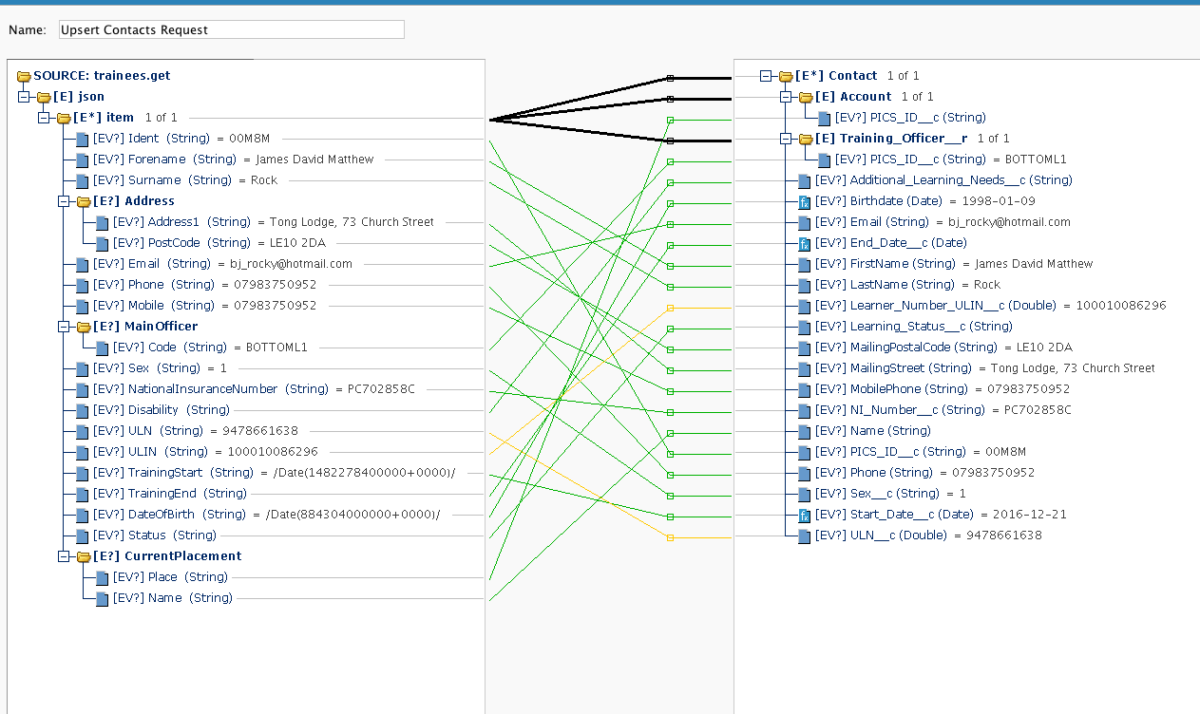Time and again when assessing new types of clients and partnerships, we’re asked to provide sample work that shows our expertise in their industry. We’ve been steeped in design innovation a long time, so it’s often not hard to show work in healthcare, finance, education, technology, you name it… But in the world of innovation, we’re bound to be introduced to an innovator who’s doing something completely different. (In fact, we hope so!) In those cases, though relationships may bring us to the table, executive stakeholders want the reassurance of working with a design firm that has an established track: “What else have they done in industry to show they get our business?”
If you ask us, while we may not be experts in robotics or biomedical engineering or the tons of technologies that are evolving every day, one thing remains true: we are proven leaders in innovative design thinking. And one example we can use to flex that muscle is how we redesigned Jitterbit’s Harmony Suite from the ground up—having never touched that kind of enterprise software before.
In 2017, we began our work with Jitterbit as complete industry outsiders. Three years later, as Jitterbit is named a Gartner Magic Quadrant 2020 leader in EiPaaS (Enterprise Integration Platform as a Service), we’re happy to congratulate our client and celebrate the work that changed the game for both Jitterbit and altr.
Jitterbit delivers low and no code solutions to help their customers connect all of their digital infrastructure, including APIs, databases, and files to make their business run more efficiently. Their EiPaaS provides a single, unified dashboard of all of company data. But, as an early pioneer in the integration space, and after more than a decade in the market, the user experience of Jitterbit’s platform became dated, increasingly confusing and a competitive disadvantage against newer rivals. Users trusted the power of Jitterbit’s back-end to effectively manage their data, but the platform’s true promise of easy-to-understand low code integration hadn’t yet been realized.
We went back to the basics. And, ironically, that’s anything but easy. Our team at altr revamped Jitterbit’s Design Studio by overhauling generally accepted design patterns that often failed to deal with the complexity of real-world demands. From new, clearer ways to map the underlying infrastructure of users’ APIs and databases, to a completely reimagined mapping experience to make the connections between source and target connectors easily understood by both novice and expert users.
Research >Concept >Do Our Damnedest To Break It >Refine >Design >Develop >Launch
We sought to understand the necessary functionality for each aspect of the product. Next, we investigated how users use these tools in the current software, sorting through gaps in the experience, confusion, and underleveraged features.
We then looked outside of the industry to identify more intuitive user flows and interactions that we could learn from in our own designs. One a-ha moment came from wandering the halls of Boston’s Museum of Science. A simple tool that children at the museum could use to program a robot sparked ideas on how to truly bring complexity to a basic level. (After all, what could be more clear than instructions created for young, developing minds.)


We worked to radically simplify and clarify flows and interactions. And, once we developed a concept, we challenged Jitterbit’s team of consultants to “break it” – asking for the most complex scenarios to ensure that the concept could address it. If it couldn’t? Back to the drawing board.


As outsiders to the industry, we were better able to break down the design communication to exactly that. Rather than focus on the subject matter, though we happily dove in to become honorary integration architects, we zoomed out to focus on how humans make connections.
Designing from scratch around user needs, while drawing inspiration from outside of the industry gave us the flexibility to innovate. We discovered that many of the problems with the old interface came from the constraints of industry norms that hadn’t kept up with changing user demands. As is so often the case, “how it’s always been done” isn’t always how it should be done.
The fact that Jitterbit was open to collaborating with a firm that hadn’t worked in the industry before (and thus hadn’t been indoctrinated by the accepted norms of integration design) opened up a world of opportunity for us and for them. Approaching this work with fresh eyes while pushing ourselves to address the most complex scenarios, we arrived at solutions to UX problems that have dogged the EiPaaS industry as it has grown. Our partners at Jitterbit gave us room to take risks, and their recognition as a leader by Gartner has shown that those risks have paid off.

Jitterbit API Platform

Jitterbit Cloud Studio